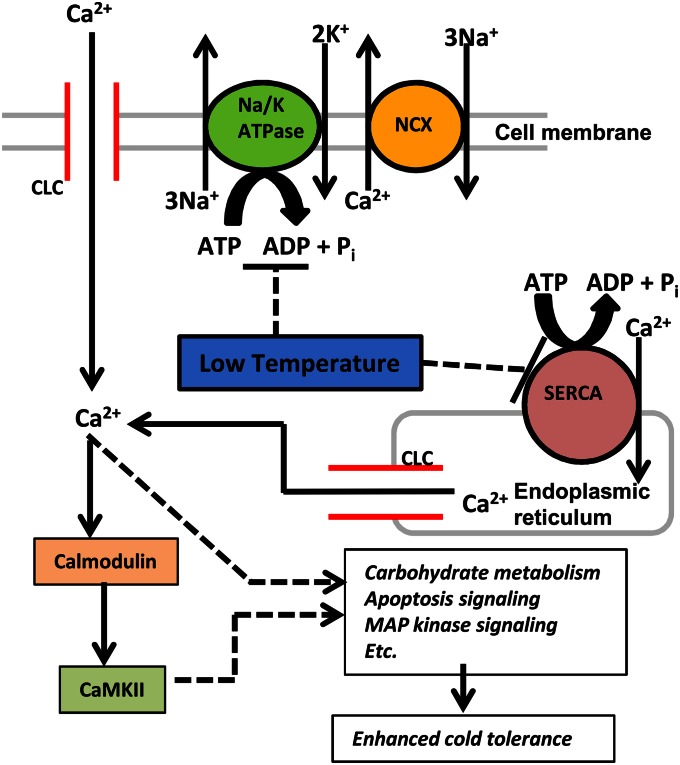Fig. 4.
Working model for the role of calcium signaling during cold sensing and rapid cold hardening. Low temperature causes an increase in intracellular calcium concentration, and we hypothesize that this calcium influx occurs by low temperature inhibition of ATP-dependent calcium export mechanisms coupled with calcium entry through calcium leak channels (CLC). In this model, low temperature inhibits the activity of both sarcoplasmic endoplasmic reticulum calcium ATPase (SERCA) and sodium/potassium ATPase (Na/K ATPase) coupled to the sodium calcium exchanger (NCX). Inside the cell, calcium, via calcium/calmodulin-dependent protein kinase II (CaMKII) and other unknown mechanisms, triggers pathways involved in rapid cold hardening, thereby enhancing the cell’s cold tolerance. Dashed lines and arrows indicate speculative relationships that were not experimentally determined in the present study.

